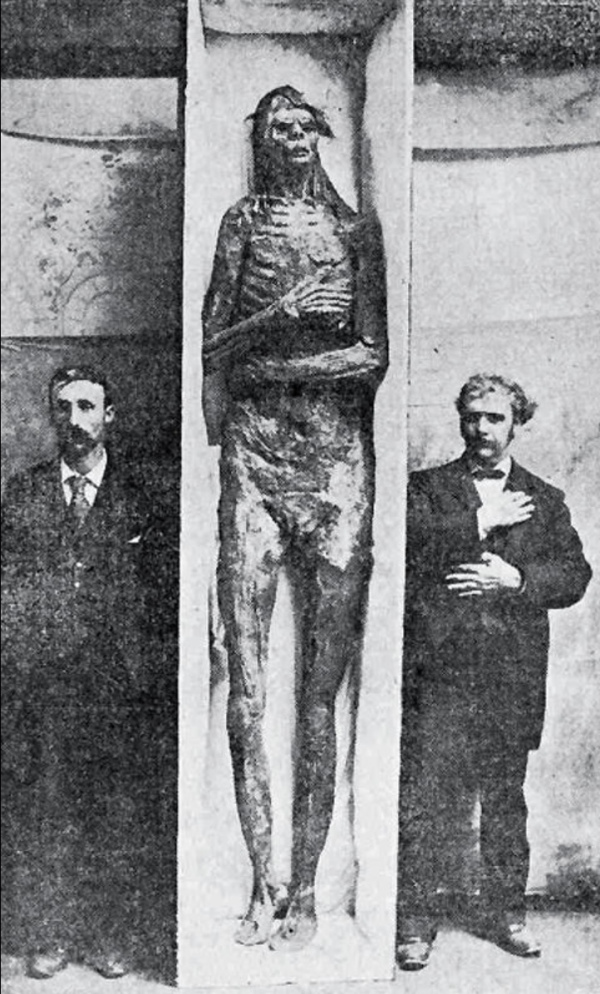 The Strange Remains blog recently published a worthwhile post on the fakery of giant (and otherwise) human remains in the 19th century. I recommend it.
The Strange Remains blog recently published a worthwhile post on the fakery of giant (and otherwise) human remains in the 19th century. I recommend it.
Folks who are into newspaper reports of giants in North America are often ignorant of the fact (or just don’t want to acknowledge) that the 19th century is well known to have been the golden era of fake news. Think of it this way — hundreds of newspapers with wide circulations, and nearly all of them guilty of deliberately NOT vetting content or publishing outright fake news. That was how you got a wider circulation. It was just business. And people who “discovered” giant human mummies and skeletons were also trying to make a buck (lots of them). Your museum or sideshow isn’t going to succeed without drawing crowds.
From the post:
“It turns out that at the turn of the 20th century, there were many factories that churned out phony mummies and antiquities to sell to eager collectors who did not care about provenance. These fakes ended up in collections all over the country, including the Mississippi State Capitol.”
The post includes a picture of an advertisement for fake mummies “while you wait.” Of course the better fakes took more time investment.
Naturally, it’s likely that at least a handful of the hundreds of newspaper articles in the 19th and early 20th centuries about the discovery of human skeletons that were atypically tall (6-7 feet range) are authentic. You’d expect any human population at any time to produce folks that were taller than most everyone else. But claims of “races” of giants on the basis of the literary output of the golden era of fake news is simply naive — or the result of a belief that native populations must have had help from “advanced races” to accomplish what they did in North and South America because they were racially inferior.





